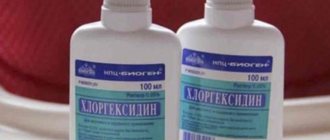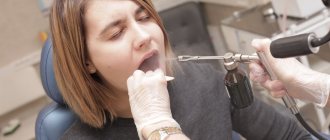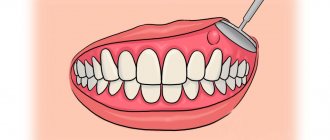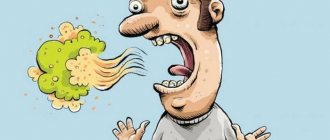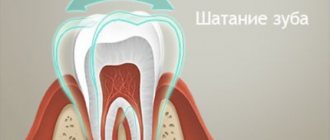A wound is damage to the skin and underlying body tissues. Such damage can be caused primarily by mechanical stress, as well as by the influence of excessive temperature or chemical factors. The wound healing process is absolutely physiological and occurs independently: the body, using natural mechanisms, restores the integrity of tissues and integuments, thus protecting internal organs. The only thing that can ensure faster wound healing is stimulation of regeneration processes and the elimination of the development of complications.
Scarring
Healing of a granulating wound occurs through scarring and epithelization. At the final stage of healing, collagen fibers appear among the cells of the granulating tissue, the number of granules decreases, and the number of fibers increases. Ultimately, the fibrous substance passes into the connective tissue and forms a scar.
When wounds heal by primary intention, delicate scar tissue is formed, which tends to resolve.
In case of healing by secondary intention, a rough scar is formed, which will not be easy to get rid of.
Types of wound healing
According to the classification of I.V. Davydkovsky, the following types of wound healing are distinguished:
- closing the defect of the epithelial cover, which occurs when the upper epithelial layer is damaged;
- healing under a scab, or healing without a scar. Observed on mucous membranes in case of minor defects.
- healing by primary intention, or healing without suppuration. Characteristic of wounds with damage to the skin and tissue underneath.
- healing by secondary intention, or healing through suppuration and granulation. Occurs with extensive wounds, accompanied by foreign objects entering the wound, tissue necrosis, microbes and infections.
What types of wounds are there?
The healing process and time of damage largely depend on its type. Wounds, according to the factors that caused them, are divided into the following types:
- puncture wounds are injuries caused by a thin object pointed at the end (an awl, a knitting needle), which are distinguished by significant depth in relation to width. In the vast majority of cases, puncture wounds practically do not bleed and this can cause a dangerous misconception that they are not dangerous and, as a result, late seeking medical help. In fact, with a stab wound, damage to internal organs is often observed, as well as internal bleeding, often intense. In this case, blood accumulates, for example, in the abdominal cavity. A narrow wound channel blocks the access of oxygen to the damaged surface, which becomes fertile ground for the development of extremely dangerous gangrenous bacteria;
- incised wounds are injuries caused by a narrow, pointed object. They can also penetrate to a considerable depth, but, unlike stab wounds, they bleed much more, since in the process of inflicting such a wound a large number of blood vessels are damaged. The edges of such a wound are smooth;
- chopped wounds are injuries inflicted by a heavy pointed object (axe, shovel). The edges are often uneven, crushed, the wounds are usually deep;
- lacerations - usually occur with intense mechanical impact on a large area of skin. The edges are uneven, often the skin peels off from the underlying tissues with the formation of a scalped wound, and intense bleeding is not uncommon;
- Bite wounds are wounds that occur as a result of the impact of the teeth of an animal or a person on the body. On the teeth, as a rule, there is plaque with specific microorganisms, which often provoke significant inflammation in the wound;
- Contusion wounds are wounds caused by blunt force trauma. The skin and underlying tissues in the damaged area often become dead. Bleeding is usually minor, interstitial with the formation of a hematoma;
- A gunshot wound is a wound caused by a firearm. It is characterized by significant damage to the tissue around the wound channel due to the impact of bullet energy on them, as well as the presence of particles of clothing and gunpowder in the channel;
- burn wounds are wounds caused by exposure of the skin to thermal energy or concentrated alkalis/acids. The intensity of damage to the skin and underlying tissue depends on the severity of the burn.
Stages of healing
The wound healing process goes through three main stages: inflammation, regeneration, and restoration of the epithelium.
The inflammation phase begins immediately after injury and in an uncomplicated state lasts for 4–5 days. During the hemostasis stage, platelets attach to sites of injury and cause a chemical reaction that activates fibrin, which forms a matrix network and binds platelets to each other. This is how blood clots form, blocking damaged blood vessels and stopping bleeding.
At the stage of proliferation and regeneration, the process of angiogenesis, collagen deposition, and the formation of granulation tissue (young connective tissue formed in places of defects) occurs. The regeneration stage can last 2–4 weeks depending on the size of the defect.
The final stage is the formation of the epithelium. Depending on the severity of the injury, the process can last from several weeks to a year or more.
Wound treatment
The choice of wound treatment method largely depends on their type (infected or necrotic, wet exuding or fibrous granulating, trophic ulcers or bedsores). Only a doctor can choose the optimal solution for treating each type of wound.
In addition, at each stage of wound healing, it is necessary to use a different agent: one that promotes the removal of exudate, the formation of granulation tissue, accelerating epithelization, etc.
When treating wounds, you need to remember that the wound does not heal on its own, but thanks to the body’s resources aimed at healing it. The immune, endocrine, and circulatory systems are involved in this process. A qualified doctor, along with treating the wound itself, will definitely prescribe a vitamin complex to maintain the body.
Doctor's consultation: when is it necessary?
It is recommended to see a doctor, even if the wound does not seem serious. In addition, there are a number of cases when you cannot do without the help of a specialist. Such cases include:
- continued bleeding from the wound - it may be necessary to stop it by ligating the vessel, applying a suture, or using a hemostatic sponge;
- foreign bodies remaining in the wound, contamination;
- wounds caused by heavily contaminated, rusty, painted, grease-coated objects;
- wounds with signs of inflammation;
- wounds caused by animals;
- suspicion of a fracture, dislocation, ligament rupture.
In addition, it is not recommended to try to use certain medications on your own. The doctor prescribes an ointment for wound epithelization.
How to speed up healing
The speed of wound healing varies. It depends on the nature of the injury and the individual characteristics of the patient, such as age, nutrition, and medications taken.
To speed up healing, it is necessary to provide optimal conditions for tissue regeneration at each stage. This role is fulfilled by therapeutic dressings designed for each stage of healing.
The method of hydrotherapy has a positive effect. Its essence consists in the sequential use of two dressings HydroClean and HydroTac. Using the first, the wound is cleaned, and then a second is applied, creating optimal conditions for granulation and epithelization.
What can affect the wound healing process?
In addition to the type of wound (wounds with smooth edges heal faster), regeneration processes directly depend on the condition of the body itself. Consequently, sufficient rest, good nutrition, intake of vitamins and minerals into the body, and giving up bad habits have a positive effect on wound healing. It should also be taken into account that there are a number of diseases that can significantly inhibit the healing process. These are endocrine diseases (in particular, diabetes mellitus); pathologies of the vascular system, which are accompanied by a decrease in the intensity of blood microcirculation; anemia; hypovitaminosis conditions; cachexia (exhaustion); some cancers; obesity; pathologies of the urinary system; liver diseases; skin pathologies, including those of an allergic nature; immunodeficiency states. Therefore, in the presence of such pathologies, attention should be paid to their treatment, or at least compensation - this will have a positive effect on the healing time and will ensure accelerated epithelization of the wound.
The purulent-inflammatory process that begins in the wound surface significantly slows down and complicates the healing process. Therefore, one of the most important tasks in wound treatment is the prevention of purulent complications. For this purpose, first of all, a thorough initial treatment of the wound by a surgeon is performed. During it, if necessary, dead tissue in the wound is removed, the edges are smoothed, bleeding stops, and the wound itself is thoroughly cleaned of clots, dirt, and foreign bodies. After this, surgical sutures are placed on the wound, or, if there is a need to monitor the wound, it is left open (in this case, sutures will be applied later). The treated wound is covered with a sterile sticker or bandage, which prevents additional trauma to the wound surface and its contamination. Also, in order to prevent purulent complications (or if purulent inflammation has already begun), antibiotics may be prescribed to the victim.
The use of ointments with an antimicrobial effect - for example, Sulfargin - plays a major role in accelerating the healing of a superficial wound, which does not require the intervention of specialists. The active substance of the drug - silver sulfadiazine - has an antibacterial effect, which is prolonged due to the gradual release of silver ions from the ointment. In this regard, one application of the drug per day is sufficient. Sulfargin not only has an antiseptic effect, but also keeps the wound in a moderately moist state under the bandage, which helps make dressings less painful and traumatic. Applying a bandage with Sulfargin ointment to the wound after cleaning it helps speed up the healing process and prevent the development of complications.
Also, to speed up wound healing, ointments with hemoderivat of dairy calves (banned in Europe and America, but used in Russia), preparations based on polyethylene oxide, methyruracil, ichthyol, propolis, syntomycin, plant extracts (in particular, aloe, tea tree, eucalyptus) can be used ), ointments with vitamins (B5, A, C). You should know that drugs that accelerate wound healing should be used only as prescribed by a specialist.
Competent first aid and further treatment of the wound are the most important conditions for its speedy healing and the absence of complications.
What to do if the wound does not heal
Non-healing or chronic are wounds that do not respond adequately to therapy despite prolonged treatment. Such wounds are usually caused not by external factors, but by reasons hidden inside the body, leading to disruption of metabolic processes and, as a consequence, disruption of the wound healing process. This category includes trophic ulcers, bedsores, and diabetic foot ulcers. Before using any dressings, consult a doctor: therapy and treatment of wounds can only be prescribed to you by a doctor!
For the treatment of chronic wounds, HARTMANN has developed a two-bandage system - HydroClean Plus and HydroTac.
The HydroClean Plus cleansing dressing can be used at all stages of wound healing, effectively removing necrotic tissue and pathogenic bacteria from the wound surface. They get caught in the absorbent layer and die under the influence of the antiseptic. The HydroTac dressing has absorbent and moisturizing properties and also protects the wound from secondary infection.
With the help of the hydrotherapy system, many patients have been able to significantly alleviate suffering and improve their quality of life.
Causes of headaches
Head sores can be a symptom of a number of problems. Among them:
- Allergic reaction. Thus, intolerance to certain foods may occur, as well as (more often) components of hair coloring, washing and fixing products.
- Weeping or dry sores on the head are a possible sign of eczema, seborrhea, psoriasis, impetigo or other dermatological diseases.
- Another possible reason for an itchy head and sores is the presence of mites or lice.
The prerequisites for the development of these unfavorable conditions are:
- hormonal disorders;
- poor nutrition;
- gastrointestinal diseases;
- improper hair care;
- autoimmune disorders;
- long-term use of certain medications;
- emotional overload;
- decreased immunity;
- blood circulation disorders;
- kidney diseases;
- activation of fungal microflora;
- negative external factors (for example, extreme temperatures, exposure to chemicals, ultraviolet radiation).




